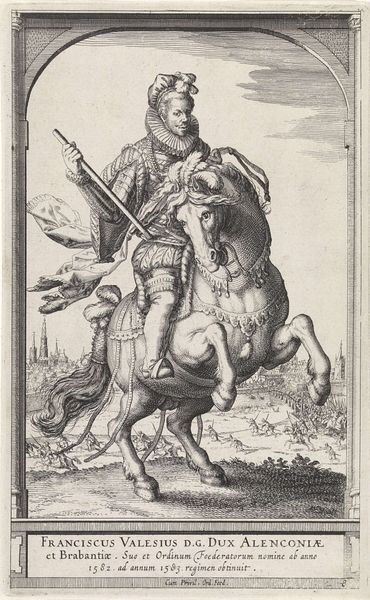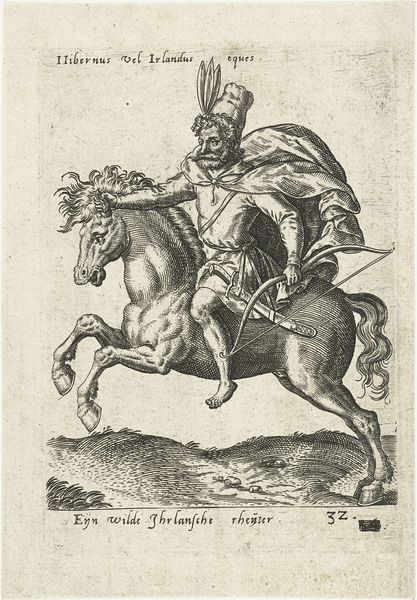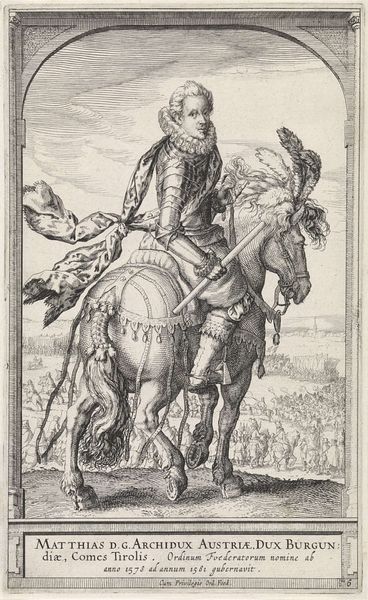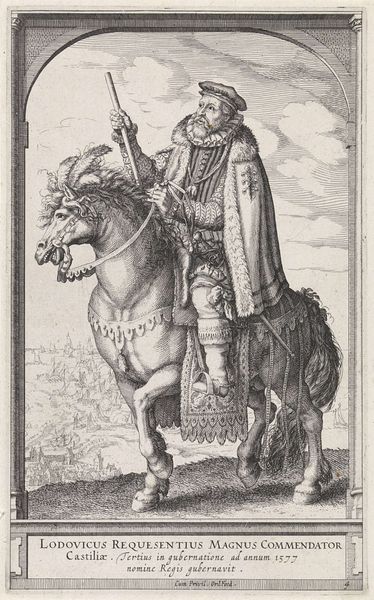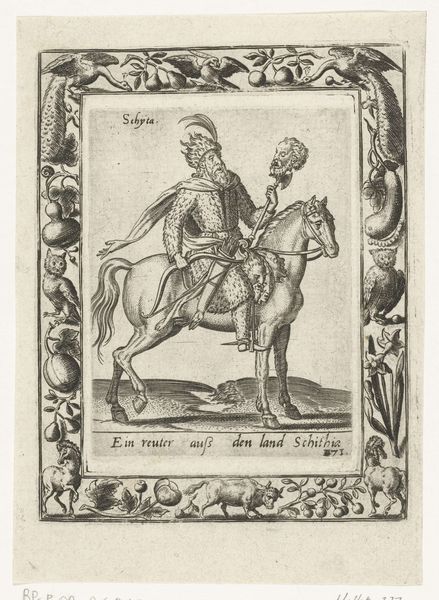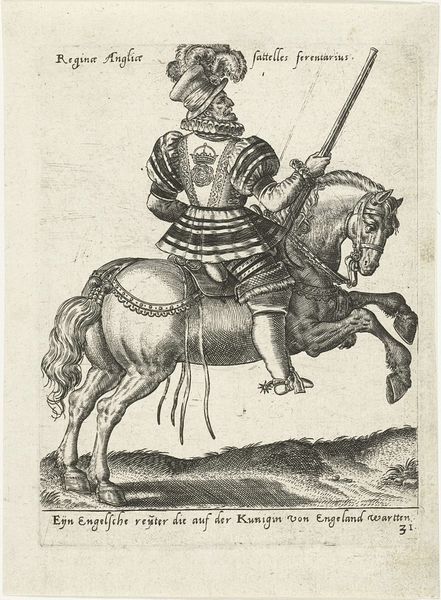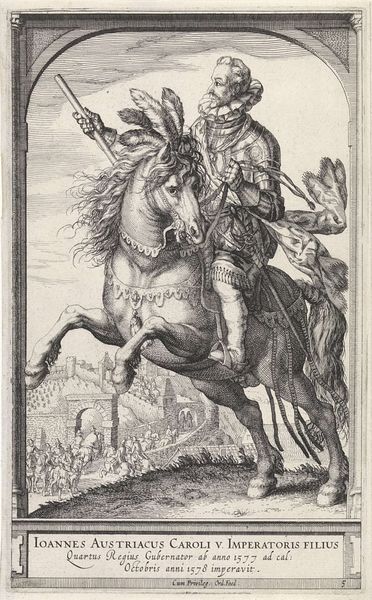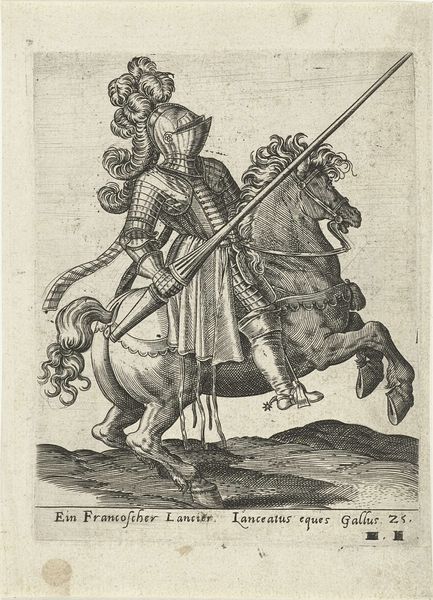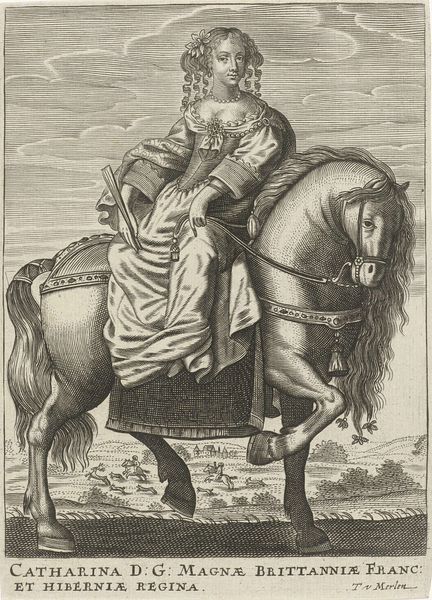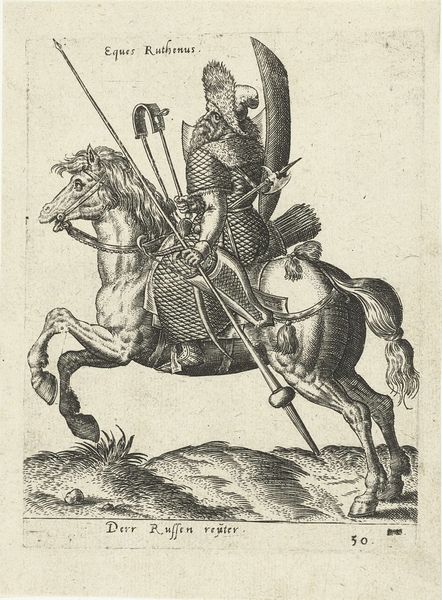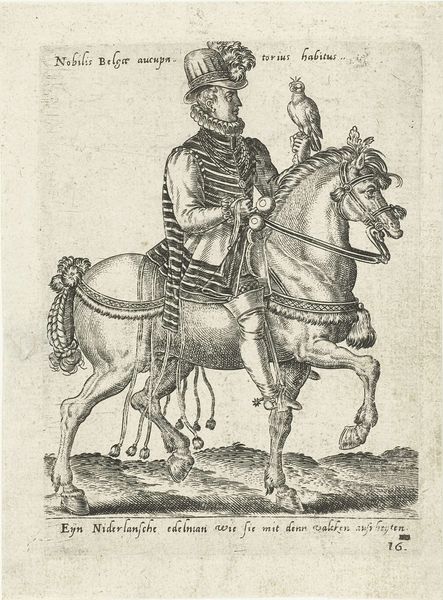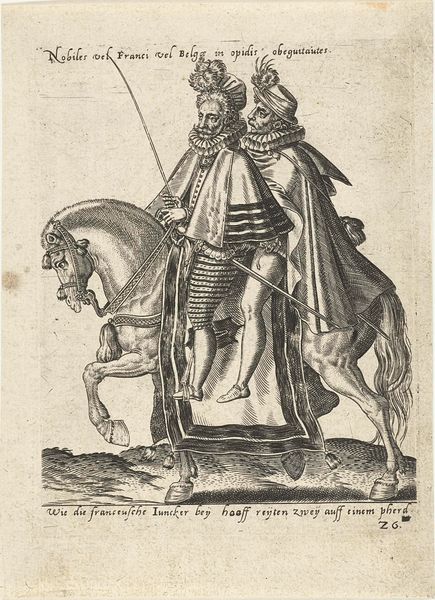
engraving
#
portrait
#
baroque
#
old engraving style
#
figuration
#
portrait drawing
#
genre-painting
#
history-painting
#
engraving
Dimensions: width 161 mm, height 260 mm
Copyright: Rijks Museum: Open Domain
Curator: Immediately, I'm struck by the sheer opulence of the figure—so stiff and ornate! Editor: This is an engraving titled "Ruiterportret van Robert Dudley, graaf van Leicester," likely created between 1591 and 1632. It’s currently housed at the Rijksmuseum and attributed to Hessel Gerritsz. Curator: The lines are remarkably fine. See how they capture the light glinting off his armor, and the musculature of the horse—the engraver really emphasized the subject's authority. It exemplifies the baroque portrait style with a slightly earlier feel of Mannerism, that careful attention to detail feels designed to impart a particular status to Dudley. Editor: It is interesting how an engraving medium and process can communicate high status. Consider the labor involved. Someone had to physically create that image by hand using a metal plate, translating a potentially more ephemeral painted image into something permanent. What was accessible to elites for paintings, like this now becomes available to wider public by printing and consuming images. It’s worth considering who would have purchased and circulated such an image, and what statements this material availability conveys about Dudley and those purchasing the portrait. Curator: Certainly the process of distribution enhances Dudley's power. Though beyond this I am compelled to view this print in the frame of semiotics: Dudley himself as signifier, with the elements within this engraving signaling noble rank— the horse, the armor, even the very meticulous and ornate style of the lines. How interesting that those attributes extend even to what is literally engraved into this artwork. Editor: It begs the question, what meaning can we find by tracing how these objects were originally acquired and understood versus the statements implied about the material reality of the art process. The means of its distribution. This transforms what initially looks like straightforward heroic depiction to a complicated discussion around production, circulation, and its consumption in different societies. Curator: Precisely. The image transforms, even, dependent upon the culture consuming it. A testament to both its complexity and simple visual statement. Editor: Absolutely. A closer look unveils this complexity, and an approach toward materials helps the viewer reframe the way it gets seen, shifting the viewing experience toward production, consumption, and, distribution as key components in a dialogue about this art.
Comments
No comments
Be the first to comment and join the conversation on the ultimate creative platform.
